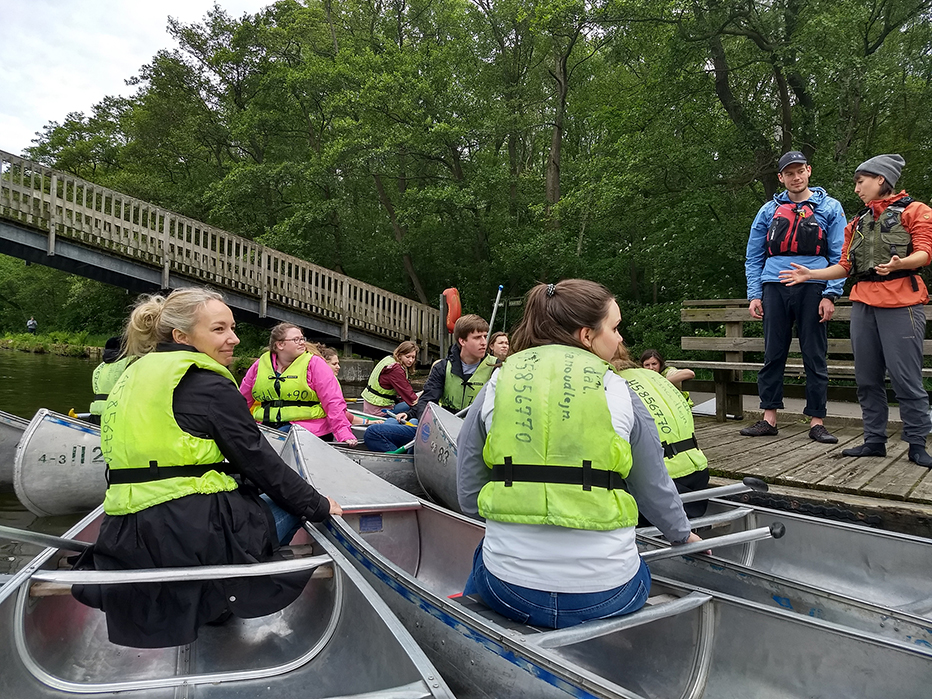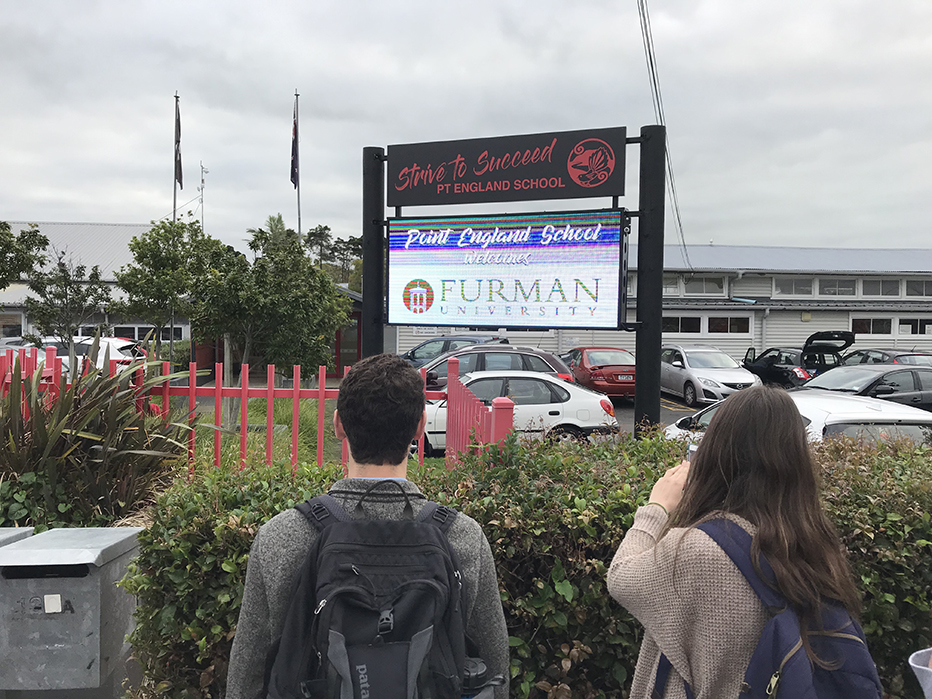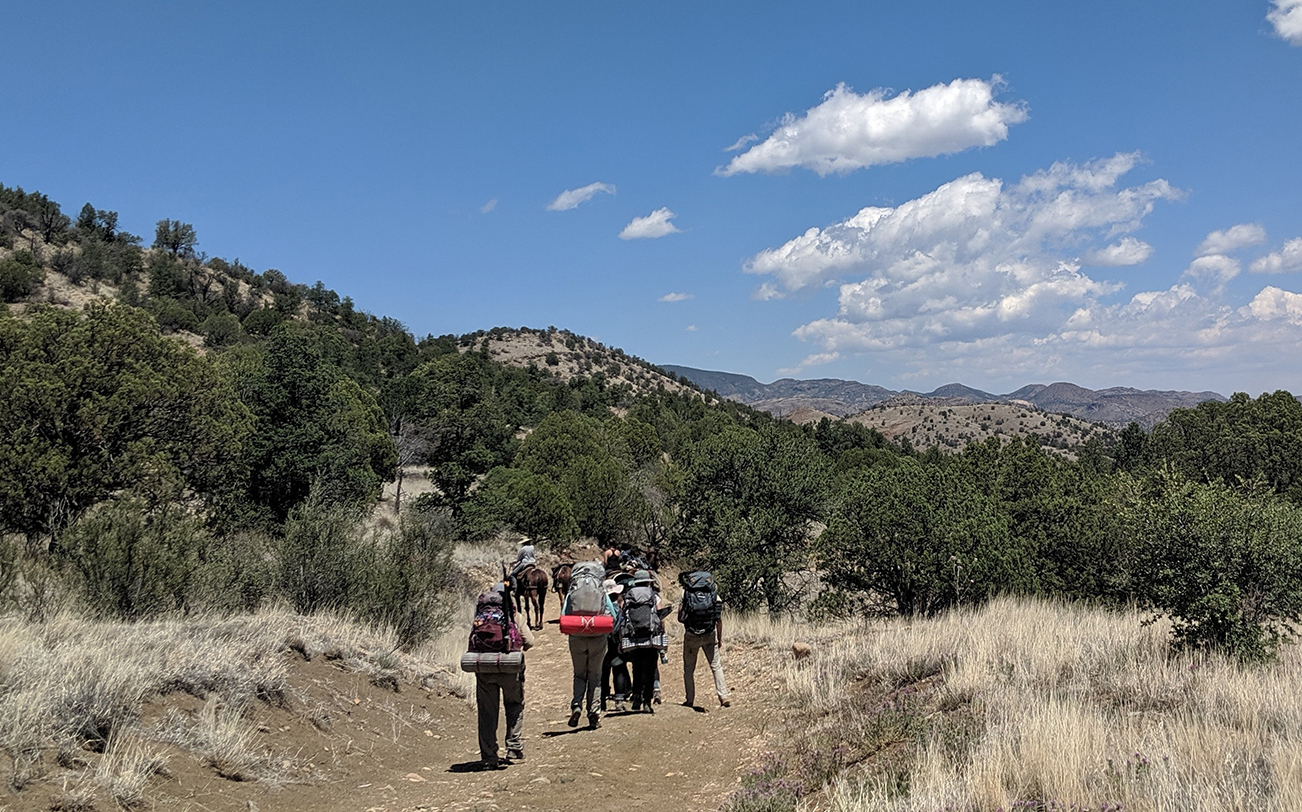Happiness, education and wilderness highlight 2019 MayX courses
Furman’s May Experience (“MayX”) is an optional three-week term following the spring semester, and the topics students explore in courses that are not offered during the academic year are limited only by the imagination of the professors who think them up. Here are three highlights from 2019 that showcase the variety of impactful, engaged learning MayX offers:
The Science & Culture of Happiness
- Who taught it: Professor of Sociology Kristy Maher and Associate Professor of Psychology Erin Hahn
- Where they went: Copenhagen, Denmark
- What they studied: Why Danish people consistently report being among the happiest on earth, and Americans not so much.

Furman students practice mindful canoeing during The Science & Culture of Happiness MayX trip to Denmark.
Since the first World Happiness Report, which ranks countries around the world by how happy their citizens perceive themselves to be, was released seven years ago, the United States has never ranked in the top 10. In 2019, in fact, the U.S. dropped to 19th. Maher and Hahn wanted to learn more and to explore how it relates to student experiences.
“What do we know about happiness?” Maher said. “Are there practices that have scientifically proven to improve happiness?”
Denmark ranked second in the same report, behind Finland, and after a few days on campus laying an academic foundation the class headed to the country’s capital to see what the smiles were all about. Differences in Danish culture include, among other things, a more robust social safety net and a focus on relationships and simplicity.
“(The students) learned about the fact that people who do random acts of kindness to strangers often have positive feelings and improvements in happiness after doing that,” Maher said. “We did mindfulness canoeing, although I think the students’ skill level with canoeing was maybe too low to be mindful doing it.”
International Perspectives of Public Education
- Who taught it: Professor of Education George Lipscomb and Associate Professor of Education Katie Kelly
- Where they went: New Zealand and Australia
- What they studied: How schools Down Under compare to the ones in the U.S., with a little bit of snorkeling, koala bear hugging and kangaroo viewing thrown in for good measure.

Two Furman students look at a sign welcoming them and other Furman students to Pt England School in Auckland, New Zealand, during the MayX course International Perspectives of Public Education.
“This is the third time we’ve gone to New Zealand and the first that we’ve added Australia,” Lipscomb said. “New Zealand, especially, is an interesting comparison because (it’s) about the size of South Carolina, with 4 or 5 million people … About half the students on the trip were education majors, and half were non-ed majors. I like the mix just because it does expose a lot of students from different parts of the university to education.”
While recovering from the jet lag that comes with a 17-hour flight from Dallas to Sydney, the group visited four schools in Australia and six in New Zealand as well as a university in each country. Participants talked to teachers and students and observed classroom methods.
“There are two things that a lot of the students on this trip definitely noticed. One is the emphasis on the outdoors, that (kids) usually have a recess time, and it’s not quite as structured as our recess time,” Lipscomb said. “The other thing that both Australia and New Zealand have is morning tea, which is a good 30 minutes in the morning where all the kids have a snack and run around and the teachers all get together in the lounge and talk about things. They liked morning tea.”
Students blogged about their experiences here.
Wilderness
- Who taught it: Professor of Biology Travis Perry ’92 and Adjunct Professor Megan Pitman
- Where they went: Aldo Leopold Wilderness in New Mexico
- What they studied: What wilderness is, where it came from, why it matters — and how to stay alive in it.

Furman students walk along a dirt road outside the Aldo Leopold Wilderness in New Mexico during the Wilderness MayX course.
Federally designated wildness areas have enjoyed the government’s highest form of land protection since The Wilderness Act was passed in 1964, and this group of students got up close and personal with more than 202,000 mostly undisturbed acres in southwestern New Mexico. With a focus on the writings of the area’s namesake, Aldo Leopold, who is considered by many to be the father of the U.S. wilderness system, they examined the Wilderness Act and the motivations that brought it about as well as the role these wilderness areas play in conservation practices in the United States and how wilderness areas in a landscape context affect animal and plant populations.
There was also a focus on plant and animal natural history, identification and tracking. Capping things off was wilderness first aid, knots and splices, map and compass work, principles of “leave no trace” camping and the safe, and proper use of horses and mules as pack stock.
“The course was a resounding success,” Perry said. “We received a lot of positive feedback from the students. They loved the challenge, the adventure, and, of course, the stunning natural beauty. They learned numerous wilderness skills, the unique function of wilderness in conservation, and perhaps a little about themselves.”
Click here to learn about Furman’s MayX program.